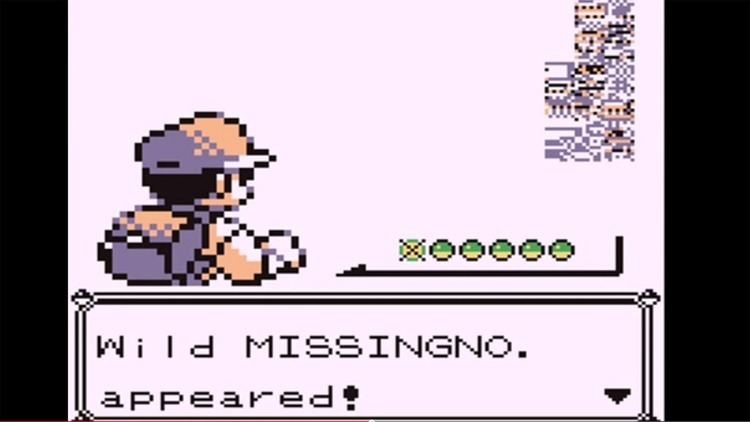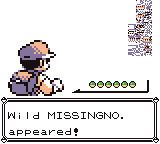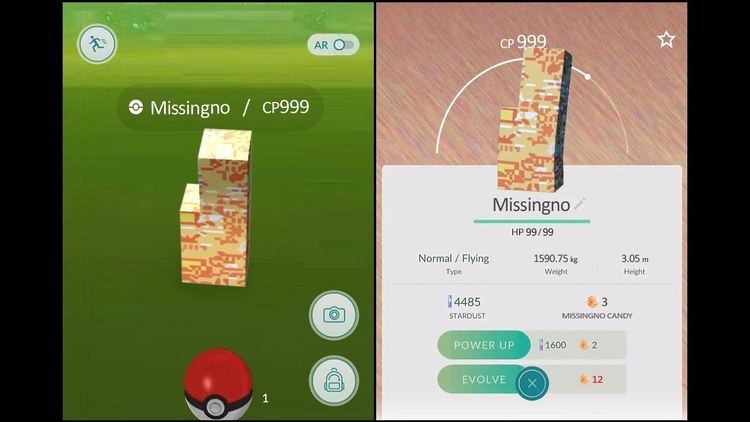 | ||
Similar Professor Samuel Oak, Ash Ketchum, Jirachi, Brock, Groudon | ||
Pok mon oras catching missingno
MissingNo. (Japanese: けつばん, Hepburn: Ketsuban), or MissingNO, is an unofficial Pokémon species found in the video games Pokémon Red and Blue. Standing for "Missing Number", MissingNo. are used as error handlers by game developer Game Freak; they appear when the game attempts to access data for a nonexistent Pokémon species. Due to the programming of three in-game events, players can encounter MissingNo. via a glitch.
Contents
- Pok mon oras catching missingno
- Missingno old man glitch explained in depth get whatever pok mon you want
- History
- Characteristics
- Reaction and reception
- References

Encountering MissingNo. causes graphical errors and the mass replication of the sixth item in the player's item menu; the latter effect resulted in the glitch's coverage by strategy guides and game magazines. IGN has noted MissingNo.'s appearance in Pokémon Red and Blue as one of the most famous video game glitches. Fans of the series have attempted to rationalize MissingNo. as part of the games' canon, and sociologists have studied its impact on players.
Missingno old man glitch explained in depth get whatever pok mon you want
History

Developed by Game Freak and published by Nintendo, the Pokémon series began in Japan in 1996. The player assumes the role of a Pokémon Trainer whose goal is to capture and train creatures called Pokémon. Players use the creatures' special abilities to combat other Pokémon, and certain abilities also grant new ways to navigate the game's world, such as instantaneous travel between two areas.
Nintendo of America first documented the events that cause MissingNo. to appear in the May 1999 issue of Nintendo Power, with a warning that "any contact with it (even if you don't catch it) could easily erase your game file or disrupt your graphics". The glitch is the result of a succession of events: first, players watch an in-game tutorial for Pokémon capture. The player then uses a Pokémon with the Fly ability to reach the game's Cinnabar Island location, and then uses a Pokémon with the Surf ability to travel up and down the eastern "shore" of the island until a MissingNo. appears.
Characteristics
Encountering a MissingNo. Pokémon is the result of three computing events. The first is the game's random battle encounter system; each area assigns values to Pokémon in a data buffer, which the game accesses for the player's encounters with wild Pokémon. However, no values are assigned to this buffer on the east coast of the Cinnabar and Seafoam Island locations—the information from the previously visited area is used instead. The second factor is the in-game tutorial, which temporarily stores the player's name in the data buffer. This causes the game to access the hexadecimal values of the player's name for Pokémon encounters at Cinnabar and Seafoam Island. The third factor is the game's error handling system; if the game selects a value from the data buffer that is not an existing Pokémon, a subroutine is triggered that causes the appearance of a Pokémon named MissingNo., short for "Missing Number".
As with any wild Pokémon, players may flee from, fight or capture MissingNo. After an encounter with MissingNo., the quantity of the sixth item in the player's item menu is usually increased by a large amount and the game's Hall of Fame Pokémon gallery becomes permanently glitched. Temporary graphical glitches may also occur, which can be removed by viewing the statistics page for another Pokémon or resetting the console. A captured MissingNo. is a fully functional Pokémon, and appears in the game's Pokémon index as number 000. All MissingNo. possess consistent abilities, type, statistics and sounds. The Pokémon commonly appears as a scrambled "d"-shape, but certain encounter values cause it to appear as one of three sprites not used by other Pokémon.
Reaction and reception
While it only appeared in the first few games of the series, MissingNo. has had a significant impact. Calling it a "programming quirk", Nintendo warned against encountering it, claiming players could possibly have to restart the game from the beginning to remove the graphical glitches. Despite Nintendo's warning, information on how to encounter MissingNo. was printed in several magazines and player's guides due to its perceived positive effect. Certain players attempted to sell "tips" on capturing MissingNo. for up to $200. Despite it not being an intentional part of the game, in 2009, IGN included MissingNo. in its list of the top video game Easter eggs, citing its usefulness in replicating the game's rarer items. IGN stated in a related article, "It really says something about Pokémon fans that they took what is a potentially game-ruining glitch and used it as a shortcut to level up their Pokémon," and later called it an "unforgettable" glitch that helped push the original games to "gaming super stardom".
Players' reactions to MissingNo. have been the subject of sociological studies. Sociologist William Sims Bainbridge stated that Game Freak created "one of the most popular glitches ever in game history", and cited its creative usage by players. In the book Pikachu's Global Adventure: The Rise and Fall of Pokémon, professor of education Julian Sefton-Green noticed that in his study of his son's reaction to MissingNo.'s usage as a "cheat", the child's outlook towards the game was altered drastically, and added that the presence of such elements as a result broke the illusion of the game as an enclosed world and reminded them that "at heart, it is a computer program". The book Playing with Videogames contains an in-depth study of MissingNo., which details players' curiosity when encountering the Pokémon. It describes their tendency to compare notes on its appearance, and to give assessment and critique to each other's findings. The book states that, in their attempts to interpret MissingNo. as part of the series's narrative through fan art and fiction, Pokémon communities celebrated the game's imperfections and tried to imprint themselves on its canon. The author described these circumstances as unique to MissingNo., and called its popularity an unusual case.
